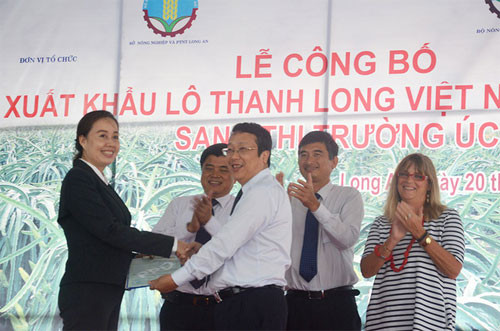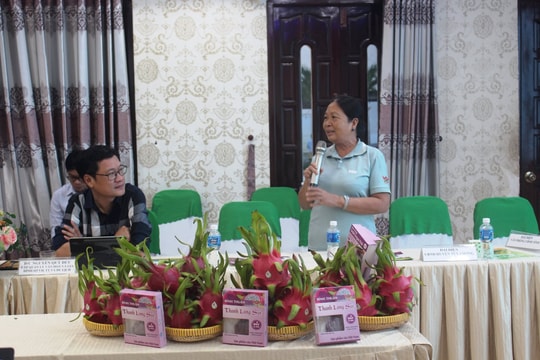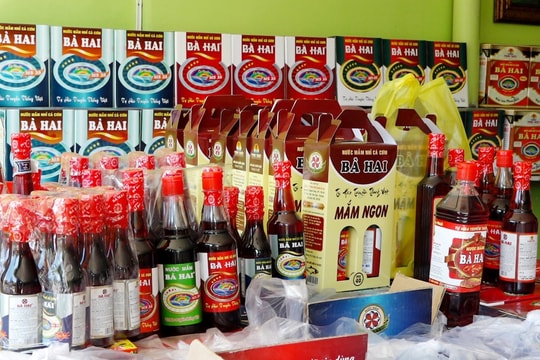 |
| Vietnam has been one of the leading countries in exporting rice for decades (illustrative image) |
Fumbling in building Vietnam’s rice brand
According to the Ministry of Agriculture and Rural Development (MARD), the export revenue of agro-forestry and aquatic products in the past eight months reached US$23.66 billion, up 13.5% over the same period in 2016. Of which, Vietnam’s rice exports in August have been estimated at 504,000 tonnes worth US$220 million, bringing the volume of exported rice over the past eight months to four million tonnes and US$1.75 billion, 19.8% and 17.5% increases in volume and value respectively, over the same period in 2016. Vietnam has been one of the leading countries in exporting rice for decades, but the logo and brand of Vietnamese rice have not been available.
On May 21, 2015, the Prime Minister approved the Scheme on development of Vietnam’s rice brand by 2020 with vision to 2030, aiming to improve the position the value and image of Vietnam’s rice, increase the awareness of producers, importers, distributors and domestic and foreign customers, which is the foundation to reinforce and develop the market, in addition to increasing the added value, market share and competitiveness in the world market,.
In nearly two years since the approval of the scheme, a logo design contest on Vietnam’s national rice brand was launched by the MARD in April, 2017. However, up to now, after nearly five months since launching the competition, the organising board has not yet selected a logo which fully reflects the traditional image, reputation and quality of Vietnamese rice, to be announced in September, 2017.
Not only rice, Vietnam’s agricultural products are widely known in the domestic and foreign markets. Many products have been protected by the National Office of Intellectual Property (NOIP) on trade names, geographical indications and appellations of origin of goods, but the products have not been integrated with a brand and are sold without logos or labels. Many products have been sold internationally using foreign branding. This is a big disadvantage, weakening Vietnamese agricultural products’ competitiveness, especially in the international economic integration process, which is more and more widespread today. It is necessary to enhance the competitiveness of the product and create products with clear origin, with the quality meeting the standards, demands and tastes of the market.
Requiring comprehensive solutions
Besides accelerating the implementation of the Scheme on the development of Vietnam’s rice brand by 2020 with vision to 2030, the agricultural sector is urgently completing a programme on developing Vietnam's main agricultural product brand by 2020 for a number of products, such as tea, coffee, mango, dragon fruit, and shark catfish, with their geographical indications. However, in order to build and develop the major agro-products brand, branches and localities should implement several basic solutions, such as prioritizing investment in localities’ characteristic agro-products and exported products; creating conditions for enterprises and cooperatives to approach resources that aim to promote the potential of land, finance, science and technology, and develop markets; training human resources; promote the connection of "four houses" (managers, scientists, enterprises and farmers) to closely and effectively participate in the roadmap for branding agricultural products.
Authorities should complete the required legal regulations on brand and it is necessary to unite trademarks in legal documents, in addition to building a comprehensive program on the development of Vietnam's agro-product brand, including full implementation guidelines on the roadmap, financial tools, techniques, coordination mechanism.
Meanwhile, it is necessary to strengthen the inspection and supervision of the quality for products, which have been building a brand to ensure good quality and a stable, gradually affirmed "reputation" in the market. In addition, it is necessary to strengthen trade promotion activities in order to promote branded products; mobilize farmers to participate in associations and craft villages to unify their views on the application of good agricultural production processes; limit spontaneous production and to not negatively affect the brand of the local products in the eyes of domestic and international consumers
At present, the agricultural sector has ten major agro-forestry and aquatic products which are exported to large markets throughout the world, such as the US, EU and Japan, of which eight products have export revenue of more than US$ 1 billion, including coffee, rubber, rice, seafood, cashew, pepper, vegetables, wood and wooden products. In order to take advantage of Vietnam's participation in free trade agreements, the MARD has prioritised the building of brand for Vietnamese agricultural products, the first being the brand name for the rice product.
Source: NDO




















.jpg)




.jpeg)

.jpeg)


.jpeg)


